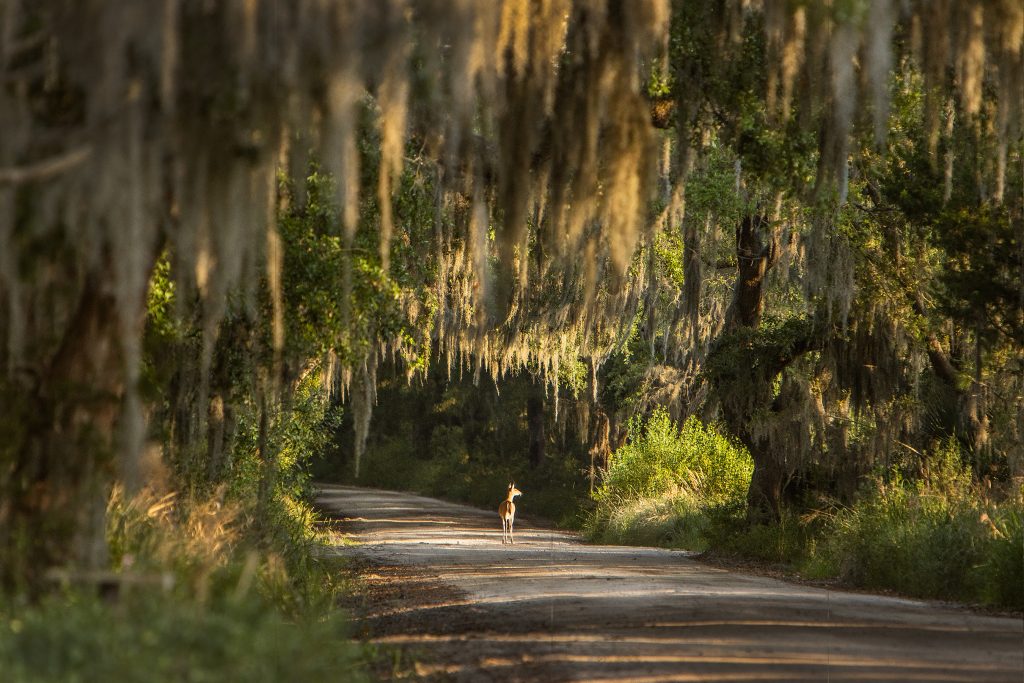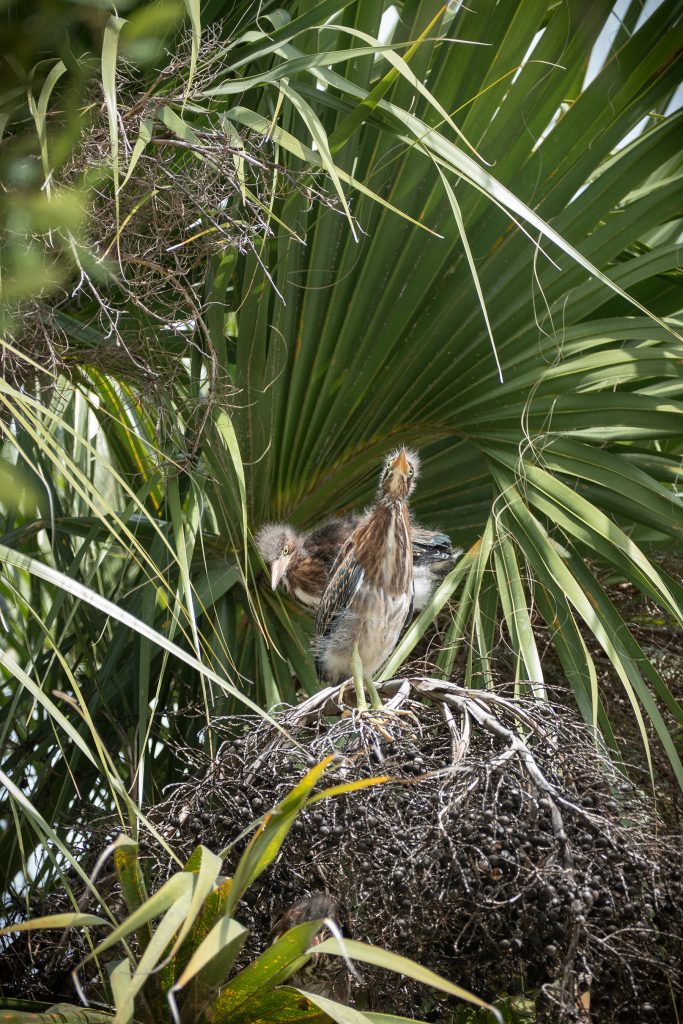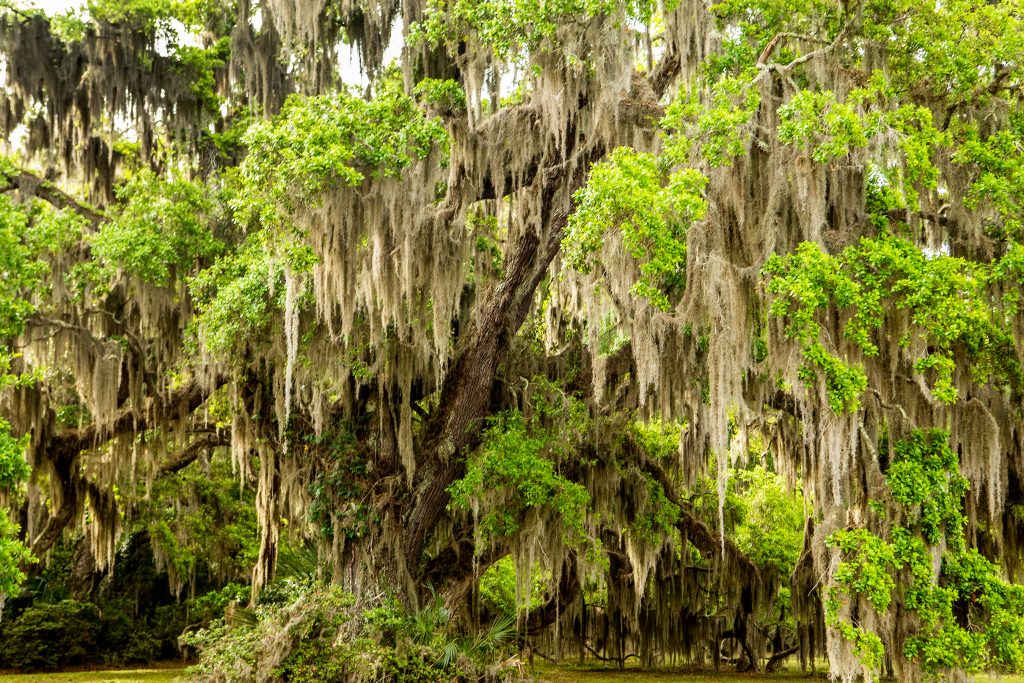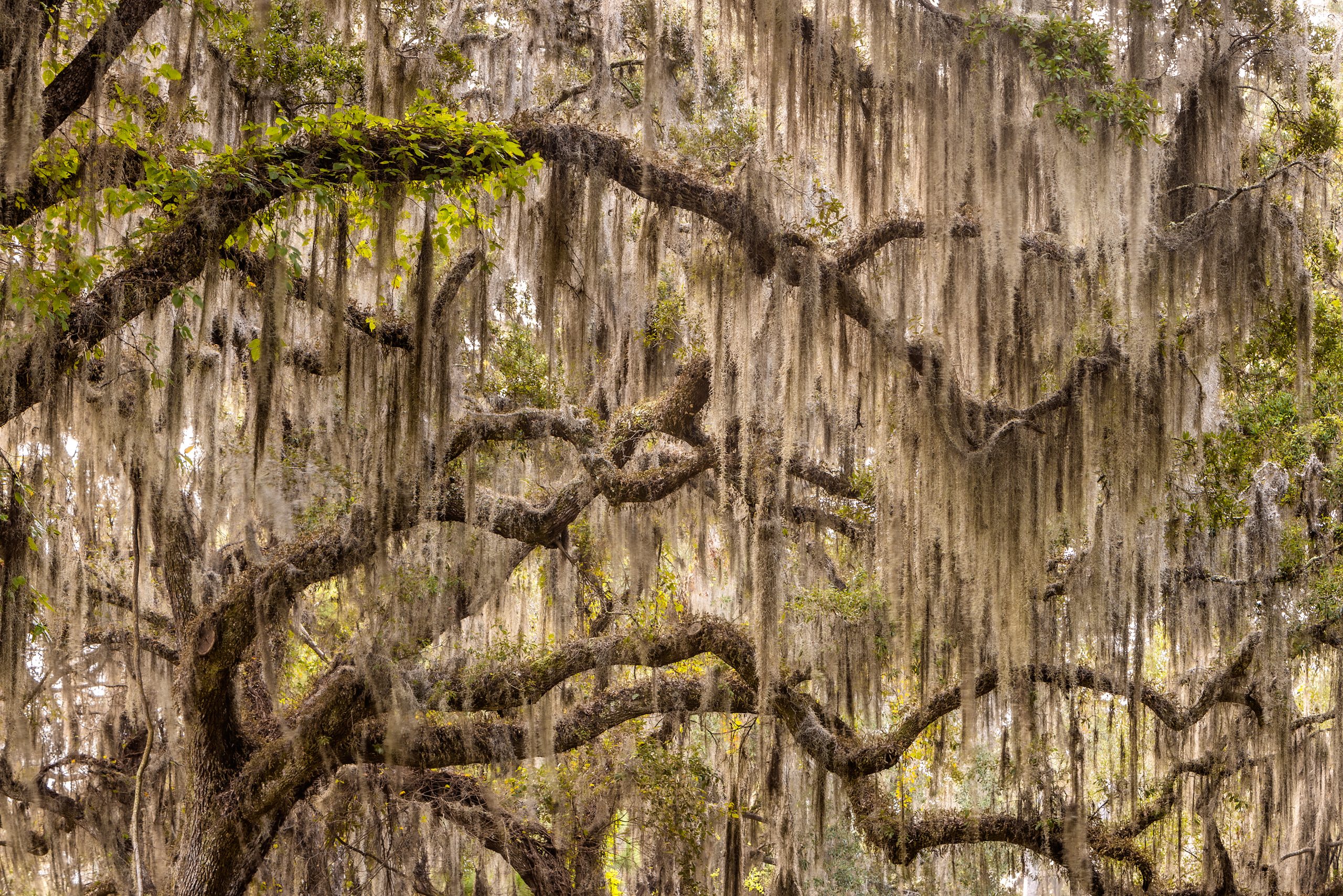
Often paired with the iconic Southern live oak, Spanish moss drapes tree limbs across the subtropical landscapes of South Carolina.
Native Americans
called it tree beard, early French settlers called it Spanish beard — reminding them of the long beards worn by Spanish conquistadors. Today we know it as Spanish moss. It’s not native to Spain, or a moss for that matter. We treasure the sight of Spanish moss swaying in the wind from the boughs of a Southern live oak, a marriage of two Southern cultural and visual icons, exciting our senses as we experience South Carolina’s unique beauty.
Spanish moss is predominantly found in the South Carolina Lowcountry due to the prevalence of heat and humidity in the region. Ranging from Argentina to the Southern United States, Spanish moss thrives in tropical and subtropical climates. You can find Spanish moss in unique locations such as Carolina bays, marshlands, swamps, and wetlands. Spanish moss derives no nutrients from a host tree, being an epiphyte, or air plant. A member of the Bryophyte or bromeliad family, the plant survives by absorbing nutrients from the air and rain. Even dust provides nourishment to the plant. The Southern live oak and bald cypress are the dominant host trees due to their increased ability to release nutrients like magnesium, potassium, and phosphorus, which the plant absorbs. Without roots, the plant spreads by seeds, windblown fragments, birds, and wildlife, who use Spanish moss for nesting materials.
Throughout history, man has found numerous uses of Spanish moss, including insulation, furniture, and padding in seat cushions during the early days of the automobile. A story circulates that Henry Ford refused to continue using the plant for padding after several seats were found to be infested with red bugs.
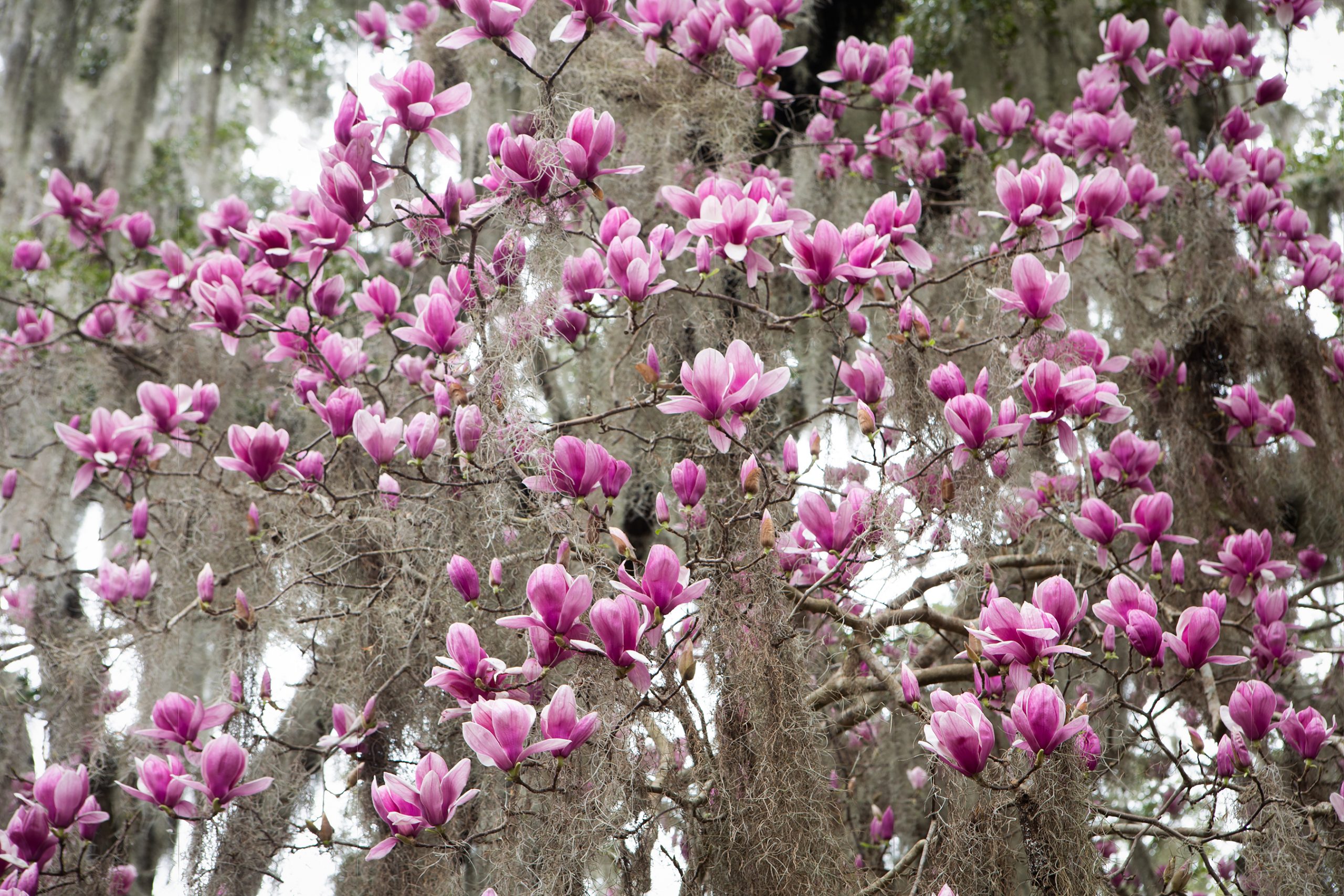
As a young boy, I was fortunate to experience the “swamp cooler” use of Spanish moss at my father’s tree nursery. In 1962, my father built a greenhouse to germinate tree and plant seeds. A furnace kept the greenhouse warm in the winters, but cooling the greenhouse in summer was an interesting task. Large metal mesh panels stuffed with processed Spanish moss fibers were installed on the back wall of the greenhouse. A gutter-like pipe filled with holes allowed dripping well water to wet the fibers of the Spanish moss. A large fan blew air across the fibers, and the evaporation of the cool water reduced the temperature inside the greenhouse. After a long, hot, summer day, I always found time to stand outside next to the panels and fan to cool off.
Decades later, I found myself close to Spanish moss again but this time as a photographer. I amassed a large inventory of Spanish moss images, along with well-known South Carolina destinations, as a stock photographer. Publishers who need photos of South Carolina always purchase images of Spanish moss for their books and magazines. Why? What is it about Spanish moss that captures the hearts and minds of so many? I believe Spanish moss has the ability to lift our senses to experience the Earth’s artwork. To me, Spanish moss is “nature’s jewelry” to a host tree, and the plant highlights the landscape with its form and uniqueness.
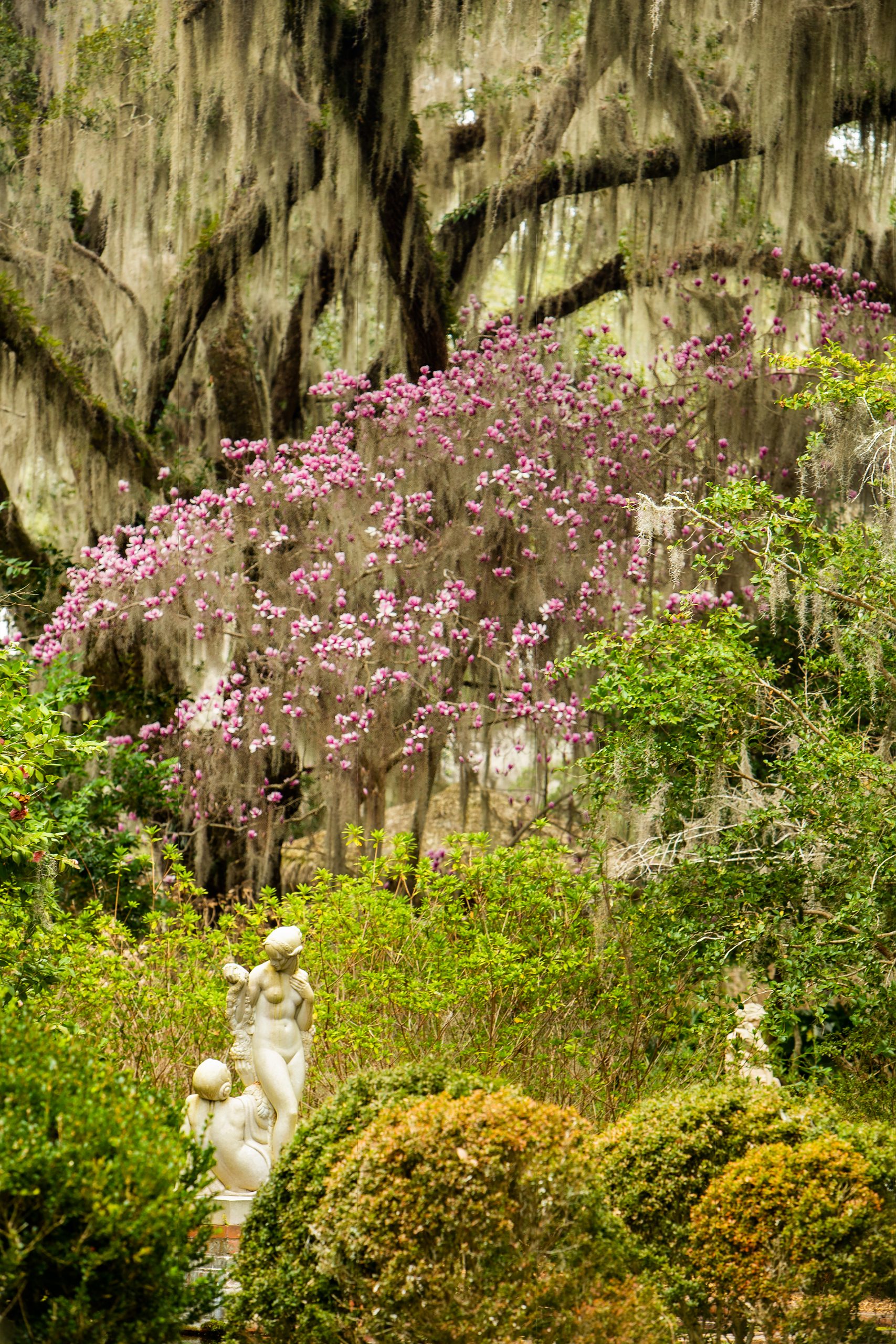
Stand next to a twisting live oak adorned with backlit Spanish moss and appreciate the setting sun energizing this simple air plant. Travel Lowcountry highways on the way to a beach vacation and marvel at the Spanish moss draped on the live oaks, which tower over the roads. Discover a peaceful state of mind, decompress from a hectic, modern lifestyle, and treasure the coming days with family.
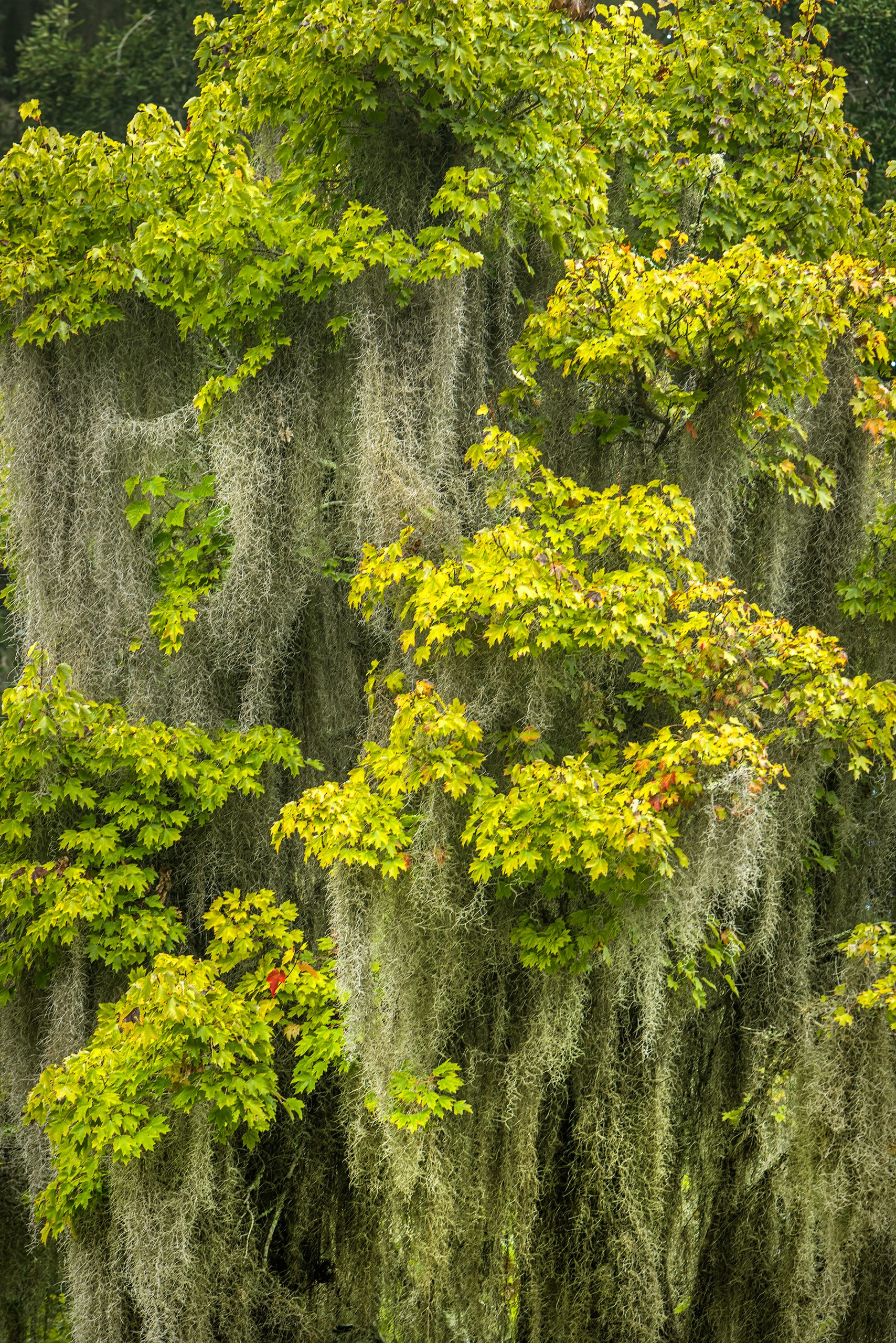

The “legend” of Spanish moss continues to amaze and evolve. Early explorers were intrigued by Spanish moss, and today thousands of South Carolinians and visiting tourists enjoy the displays of Spanish moss in state parks, public gardens, and Lowcountry vacation destinations. All from a simple air plant.




